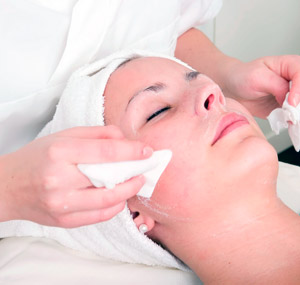Skin Peels
 Chemical skin peels help freshen the skin, reduce wide pores, remove irregularities of texture and colour and reduce fine wrinkling. Milder skin peels form a basis for home maintenance, and stronger skin peels in the clinic provide a healthy boost to aging skin. Skin peels should form the foundation of most skin care regimens.
Chemical skin peels help freshen the skin, reduce wide pores, remove irregularities of texture and colour and reduce fine wrinkling. Milder skin peels form a basis for home maintenance, and stronger skin peels in the clinic provide a healthy boost to aging skin. Skin peels should form the foundation of most skin care regimens.
Chemical skin peels have a greater effect on finer skin and less on thick heavy skin. Heavy wrinkles require multiple treatments, and drooping tissues may require alternate procedures such as eyelid lift, brow lift or facelift.
Skin Peel Types
Chemical skin peels are classified as being SUPERFICIAL, MEDIUM and DEEP, and may be combined with microdermabrasion to achieve a greater affect.
At Eccles Clinic we restrict ourselves to mild or medium depth skin peels and do not recommend strong skin peels for safety reasons.
Mild to medium strength chemical skin peels are popular because they have a high safety margin and provide effective results. Many patients benefit from a series of several skin peels at two to four weekly intervals. This provides a chance for the skin to recover.
Preparing for your Skin Peel
Prior to any treatment your consultant will analyze your skin and advise on any on general measures. A home maintenance program will start skin repair and measure your skin peel sensitivity.
Patients who have previously experienced cold sores, are on hormonal tablets, work in the sun, have had previous radiotherapy, have used Roaccutane for acne or have had previous hair removal must discuss these instances with the consultant prior to treatment.
Two weeks prior to treatment, patients will begin a course of vitamins B, C and zinc. Water intake will increase to 2 litres per day to maintain hydration. Protein intake will also increase and patients will be advised to apply a mild moisturiser twice a day for one week prior to the skin peel.
The Treatment
The actual chemical skin peel is a specially prepared lotion which removes the outer cells of the skin. The lotions are applied direct to the skin in varying strengths. Typically, our patients are treated with a mild preparation in the first procedure. Based on the patient’s recovery, the strength of the skin peel may be increased to match your skin type. In some cases, two different skin peels may be combined depending upon your needs and skin type.
After Treatment Care
Following the procedure, antibiotics and antiviral medicines may be prescribed in selected cases. Patients who have had a skin peel may return to work the same day, and apply makeup the following day.
Although extremely uncommon, patients may experience a reaction to the skin peel and complications can occur. Excessive redness and peeling of the skin, Infection, Hypopigmentation (lightening of the skin colour), Hyperpigmentation (darkening of the skin colour) and scarring have been reported.
For the best results... Skin peels are usually done as part of a program in conjunction with home maintenance. Lactic acid type skin peels are performed in a program of three to six sessions, one to three weeks apart. A greater effect may require laser skin resurfacing.
